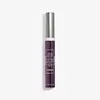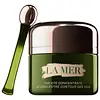What's inside
What's inside
 Key Ingredients
Key Ingredients

 Benefits
Benefits

 Concerns
Concerns

 Ingredients Side-by-side
Ingredients Side-by-side

Water
Skin ConditioningRosa Centifolia Flower Water
Skin ConditioningButylene Glycol
HumectantGlycerin
HumectantAlumina
AbrasiveIsostearyl Isostearate
EmollientPolyacrylate Crosspolymer-6
Emulsion StabilisingButyrospermum Parkii Butter
Skin ConditioningTocopheryl Acetate
AntioxidantCaffeine
Skin ConditioningChlorella Vulgaris Extract
Skin ConditioningBiosaccharide Gum-1
HumectantRose Extract
Skin ConditioningVitis Vinifera Leaf Extract
Skin ConditioningPadina Pavonica Thallus Extract
Skin ConditioningPropylheptyl Caprylate
EmollientCaprylic/Capric Triglyceride
MaskingHydroxyethyl Acrylate/Sodium Acryloyldimethyl Taurate Copolymer
Emulsion StabilisingSimmondsia Chinensis Seed Oil
EmollientEthylhexylglycerin
Skin ConditioningDisodium EDTA
Polysorbate 60
EmulsifyingSorbitan Isostearate
EmulsifyingCitric Acid
BufferingSodium Hydroxide
BufferingPhenoxyethanol
PreservativeSodium Benzoate
MaskingPotassium Sorbate
PreservativeTocopherol
AntioxidantCI 77491
Cosmetic ColorantWater, Rosa Centifolia Flower Water, Butylene Glycol, Glycerin, Alumina, Isostearyl Isostearate, Polyacrylate Crosspolymer-6, Butyrospermum Parkii Butter, Tocopheryl Acetate, Caffeine, Chlorella Vulgaris Extract, Biosaccharide Gum-1, Rose Extract, Vitis Vinifera Leaf Extract, Padina Pavonica Thallus Extract, Propylheptyl Caprylate, Caprylic/Capric Triglyceride, Hydroxyethyl Acrylate/Sodium Acryloyldimethyl Taurate Copolymer, Simmondsia Chinensis Seed Oil, Ethylhexylglycerin, Disodium EDTA, Polysorbate 60, Sorbitan Isostearate, Citric Acid, Sodium Hydroxide, Phenoxyethanol, Sodium Benzoate, Potassium Sorbate, Tocopherol, CI 77491
Algae Extract
EmollientWater
Skin ConditioningDimethicone
EmollientIsododecane
EmollientGlycerin
HumectantHydrogenated Polyisobutene
EmollientTrisiloxane
Skin ConditioningCaprylic/Capric/Myristic/Stearic Triglyceride
EmollientVinyl Dimethicone/Methicone Silsesquioxane Crosspolymer
Caprylic/Capric Triglyceride
MaskingMaris Sal
Skin ConditioningYeast Extract
Skin ConditioningHelichrysum Arenarium Extract
AntiseborrhoeicSesamum Indicum Seed Oil
EmollientMedicago Sativa Seed Powder
Skin ConditioningHelianthus Annuus Seedcake
AbrasivePrunus Amygdalus Dulcis Seed Meal
AbrasiveEucalyptus Globulus Leaf Oil
PerfumingSodium Gluconate
Skin ConditioningCopper Gluconate
Skin ConditioningCalcium Gluconate
HumectantMagnesium Gluconate
Skin ConditioningZinc Gluconate
Skin ConditioningTocopheryl Succinate
AntioxidantNiacin
SmoothingSesamum Indicum Seed Powder
Skin ConditioningAsparagopsis Armata Extract
Skin ProtectingLaminaria Digitata Extract
Skin ProtectingSaccharum Officinarum Extract
MoisturisingPhytosphingosine
Skin ConditioningEcklonia Cava Extract
Skin ConditioningCorallina Officinalis Extract
Skin ConditioningSodium Hyaluronate
HumectantSigesbeckia Orientalis Extract
Skin ConditioningPolygonum Fagopyrum Seed Extract
Skin ConditioningBrassica Campestris Seed Oil
Skin ConditioningPolyglyceryl-3 Diisostearate
EmulsifyingGlycyrrhiza Glabra Root Extract
BleachingAscophyllum Nodosum Extract
Skin ConditioningCitrus Aurantifolia Peel Extract
CleansingCucumis Sativus Fruit Extract
EmollientAcetyl Hexapeptide-8
HumectantAlthaea Officinalis Root Extract
Skin ConditioningOryza Sativa Bran Extract
Skin ConditioningTocopheryl Acetate
AntioxidantSaccharomyces Lysate Extract
HumectantMacadamia Integrifolia Seed Oil
Skin ConditioningDipeptide-2
Skin ConditioningGlyceryl Triacetyl Ricinoleate
EmollientPalmitoyl Tetrapeptide-7
Skin ConditioningCaffeine
Skin ConditioningTetraacetylphytosphingosine
Skin ConditioningLactis Proteinum
Skin ConditioningAcetyl Glucosamine
Skin ConditioningTriethylhexanoin
MaskingSorbitol
HumectantHordeum Vulgare Extract
EmollientGlycine Soja Protein
EmulsifyingCholesterol
EmollientHydrolyzed Yeast Protein
Skin ConditioningIsononyl Isononanoate
EmollientPropylene Glycol Dicaprate
EmollientCetyl PEG/PPG-10/1 Dimethicone
EmulsifyingCaprylyl Glycol
EmollientSucrose
HumectantPolysilicone-11
Dimethicone Crosspolymer
Emulsion StabilisingDimethicone Crosspolymer-3
Skin ConditioningSilica
AbrasiveNylon-12
Trimethylsiloxysilicate
EmollientSteareth-20
CleansingCalcium Chloride
AstringentHesperidin Methyl Chalcone
AntioxidantPEG/PPG-18/18 Dimethicone
EmulsifyingAlumina
AbrasiveTriethoxycaprylylsilane
Hydrogenated Vegetable Oil
EmollientAlcohol Denat.
AntimicrobialPropanediol
SolventParfum
MaskingBHT
AntioxidantPhenoxyethanol
PreservativePotassium Sorbate
PreservativeChlorhexidine Digluconate
AntimicrobialSodium Benzoate
MaskingMica
Cosmetic ColorantCI 77891
Cosmetic ColorantAlgae Extract, Water, Dimethicone, Isododecane, Glycerin, Hydrogenated Polyisobutene, Trisiloxane, Caprylic/Capric/Myristic/Stearic Triglyceride, Vinyl Dimethicone/Methicone Silsesquioxane Crosspolymer, Caprylic/Capric Triglyceride, Maris Sal, Yeast Extract, Helichrysum Arenarium Extract, Sesamum Indicum Seed Oil, Medicago Sativa Seed Powder, Helianthus Annuus Seedcake, Prunus Amygdalus Dulcis Seed Meal, Eucalyptus Globulus Leaf Oil, Sodium Gluconate, Copper Gluconate, Calcium Gluconate, Magnesium Gluconate, Zinc Gluconate, Tocopheryl Succinate, Niacin, Sesamum Indicum Seed Powder, Asparagopsis Armata Extract, Laminaria Digitata Extract, Saccharum Officinarum Extract, Phytosphingosine, Ecklonia Cava Extract, Corallina Officinalis Extract, Sodium Hyaluronate, Sigesbeckia Orientalis Extract, Polygonum Fagopyrum Seed Extract, Brassica Campestris Seed Oil, Polyglyceryl-3 Diisostearate, Glycyrrhiza Glabra Root Extract, Ascophyllum Nodosum Extract, Citrus Aurantifolia Peel Extract, Cucumis Sativus Fruit Extract, Acetyl Hexapeptide-8, Althaea Officinalis Root Extract, Oryza Sativa Bran Extract, Tocopheryl Acetate, Saccharomyces Lysate Extract, Macadamia Integrifolia Seed Oil, Dipeptide-2, Glyceryl Triacetyl Ricinoleate, Palmitoyl Tetrapeptide-7, Caffeine, Tetraacetylphytosphingosine, Lactis Proteinum, Acetyl Glucosamine, Triethylhexanoin, Sorbitol, Hordeum Vulgare Extract, Glycine Soja Protein, Cholesterol, Hydrolyzed Yeast Protein, Isononyl Isononanoate, Propylene Glycol Dicaprate, Cetyl PEG/PPG-10/1 Dimethicone, Caprylyl Glycol, Sucrose, Polysilicone-11, Dimethicone Crosspolymer, Dimethicone Crosspolymer-3, Silica, Nylon-12, Trimethylsiloxysilicate, Steareth-20, Calcium Chloride, Hesperidin Methyl Chalcone, PEG/PPG-18/18 Dimethicone, Alumina, Triethoxycaprylylsilane, Hydrogenated Vegetable Oil, Alcohol Denat., Propanediol, Parfum, BHT, Phenoxyethanol, Potassium Sorbate, Chlorhexidine Digluconate, Sodium Benzoate, Mica, CI 77891
 Reviews
Reviews

Ingredients Explained
These ingredients are found in both products.
Ingredients higher up in an ingredient list are typically present in a larger amount.
Alumina is another name for the compound aluminum oxide. It is used as a thickener, absorbent, and abrasive.
As an absorbent, alumina can give a mattifying effect. It is used in mineral sunscreens to help coat nano-sized filters, such as titanium dioxide. By increasing the size of the UV filters, these ingredients stay on the skin for a longer time. By coating small sized ingredients, alumina helps thicken a product.
Alumina may be used as an abrasive, or exfoliant.
Alumina is naturally occurring in the mineral corundum. Certain varieties of corundum create rubies and sapphires. Corundum is also the crystalline form of alumina.
Learn more about AluminaCaffeine is most associated with coffee, tea, and cacao. In skincare, it helps with calming inflammation and is rich in antioxidants.
While caffeine is used to treat cellulite and and dark circles, further studies are needed to prove this. It has been believed to help with these skin conditions due to its ability to dilate blood vessels and increase blood flow.
Some studies are looking into caffeine's ability to protect against UV rays.
Learn more about CaffeineThis ingredient is an emollient, solvent, and texture enhancer. It is considered a skin-softener by helping the skin prevent moisture loss.
It helps thicken a product's formula and makes it easier to spread by dissolving clumping compounds.
Caprylic Triglyceride is made by combining glycerin with coconut oil, forming a clear liquid.
While there is an assumption Caprylic Triglyceride can clog pores due to it being derived from coconut oil, there is no research supporting this.
Learn more about Caprylic/Capric TriglycerideGlycerin is already naturally found in your skin. It helps moisturize and protect your skin.
A study from 2016 found glycerin to be more effective as a humectant than AHAs and hyaluronic acid.
As a humectant, it helps the skin stay hydrated by pulling moisture to your skin. The low molecular weight of glycerin allows it to pull moisture into the deeper layers of your skin.
Hydrated skin improves your skin barrier; Your skin barrier helps protect against irritants and bacteria.
Glycerin has also been found to have antimicrobial and antiviral properties. Due to these properties, glycerin is often used in wound and burn treatments.
In cosmetics, glycerin is usually derived from plants such as soybean or palm. However, it can also be sourced from animals, such as tallow or animal fat.
This ingredient is organic, colorless, odorless, and non-toxic.
Glycerin is the name for this ingredient in American English. British English uses Glycerol/Glycerine.
Learn more about GlycerinPhenoxyethanol is a preservative that has germicide, antimicrobial, and aromatic properties. Studies show that phenoxyethanol can prevent microbial growth. By itself, it has a scent that is similar to that of a rose.
It's often used in formulations along with Caprylyl Glycol to preserve the shelf life of products.
Potassium Sorbate is a preservative used to prevent yeast and mold in products. It is commonly found in both cosmetic and food products.
This ingredient comes from potassium salt derived from sorbic acid. Sorbic acid is a natural antibiotic and effective against fungus.
Both potassium sorbate and sorbic acid can be found in baked goods, cheeses, dried meats, dried fruit, ice cream, pickles, wine, yogurt, and more.
You'll often find this ingredient used with other preservatives.
Learn more about Potassium SorbateSodium Benzoate is a preservative. It's used in both cosmetic and food products to inhibit the growth of mold and bacteria. It is typically produced synthetically.
Both the US FDA and EU Health Committee have approved the use of sodium benzoate. In the US, levels of 0.1% (of the total product) are allowed.
Sodium benzoate works as a preservative by inhibiting the growth of bacteria inside of cells. It prevents the cell from fermenting a type of sugar using an enzyme called phosphofructokinase.
It is the salt of benzoic acid. Foods containing sodium benzoate include soda, salad dressings, condiments, fruit juices, wines, and snack foods.
Studies for using ascorbic acid and sodium benzoate in cosmetics are lacking, especially in skincare routines with multiple steps.
We always recommend speaking with a professional, such as a dermatologist, if you have any concerns.
Learn more about Sodium BenzoateTocopheryl Acetate is AKA Vitamin E. It is an antioxidant and protects your skin from free radicals. Free radicals damage the skin by breaking down collagen.
One study found using Tocopheryl Acetate with Vitamin C decreased the number of sunburned cells.
Tocopheryl Acetate is commonly found in both skincare and dietary supplements.
Learn more about Tocopheryl AcetateWater. It's the most common cosmetic ingredient of all. You'll usually see it at the top of ingredient lists, meaning that it makes up the largest part of the product.
So why is it so popular? Water most often acts as a solvent - this means that it helps dissolve other ingredients into the formulation.
You'll also recognize water as that liquid we all need to stay alive. If you see this, drink a glass of water. Stay hydrated!
Learn more about Water